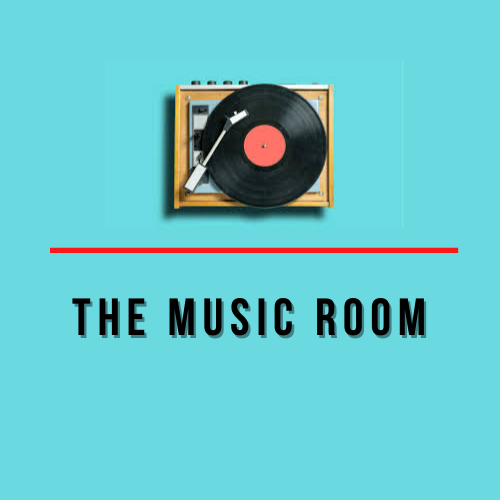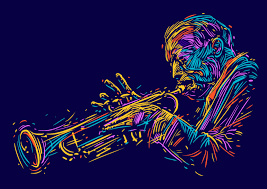In a world of so much beautiful variety of music from different countries, there is a unique derivation in our country. The Hindi Film Music. It is a great deal of combinations of multiple genres. Like many different water streams flows and culminate into a river, Indian film music is also one of its kind amalgamation of so many genres and styles of music. There are rock, pop, classical, country, Jazz and other various genres that found their place in immortal compositions of our Hindi film music. Our talented music makers have picked up various elements from different genres and used them in their songs.
In the decade of 50’s to 80’s, our composers have been listening to and picking up the finer elements from the Jazz apart from other genres. However, the absorption of Jazz was so deep rooted in their compositions and style of arrangements, that it became an integral part of the film music. It would be interesting to see how we have been enjoying Jazz music in our songs without even knowing it.
Jazz as a music genre evolved for almost a century. Essentially its a free music wherein the musicians make improvisations while performing within the boundaries of rules like any other fine art. Unlike other tight bound music domains, Jazz offers much flexibility and liberty to musicians. Many sub genres and styles were developed during the course of its evolution. Some of the elements picked up by our composers from this free flowing music ocean were swing, Blues, Running bass lines and afro-latin rhythms.
Apparently these words look Greek and Latin but with some examples it’s easier to understand and relate. Lets have a look at each of them.
Swing rhythm
Swing is a type of rhythm that has been always used for a dance numbers and peppy songs. Its original style of playing had use of drums, high hats, double bass (acoustic bass) and rhythm guitaring. It gives a bouncy and foot tapping feel to the listener. A prominent example of use of Swing is the popular song Hum aapki aankhon mein iss dil ko basa de toh (Pyasa) composed by S.D.Burman and sung by Mohd Rafi and Geeta Dutt, in which the song had beautiful soft swing rhythm with lovely harmony on acoustic guitar.
Some other experimental composers have even fused Indian rhythm in Swing also. Salil Chowdhary who was one of the finest composers in Hindi, Bengali and Malyalam films, had used Swing and added Keherwa taal in the antara of the song Aankhon mein tum dil mein tum ho (Half Ticket). It was sung by Kishore Kumar and Geeta Dutt.
Blues
Blues originated in African American communities in the southern United States in the late 19th and early 20th centuries. The roots of the Blues can be traced back to African music traditions that were brought over to America during the slave trade. The black coal miners, slaves and workers used to sing their hearts out after a days hard work and thus came the Blues to express the pathos and hardships of life.
over a period of time as it evolved, the use of Blues melodic phrasing became part of many compositions and was well adapted in Hindi Film Songs too. The blues phrasing involves typical progression from sharp to flat note in a half note progression such as B-flat to A or F-Sharp to F.
Tum jo mil gaye ho (Hanste Zakhm) is a prominent example of Blues. The line ‘Ke Jahann…mil gaya’ is example of using Blues phrasing in it. It was composed by Madan Mohan and sung by Mohd Rafi. The arrangement and bringing out the effect of blues in orchestration can be attributed to the arranger Kersi Lord.
While it was bit easier to infuse the bluesy feel in the songs having western music arrangements, some brilliant composers like Jaidev have used it in songs having Indian Classical mould. The song Raat bhi hai kuchh bheegi bheegi (Mujhe Jeene Do) which is based on Raag Dhani, has a use of the bluesy phrase in the line “Soyi hui paayal ki chham chham….”. It is interesting that in the Raag Dhani, there is no progression of Komal Swar (Sharp note) to Tivra Swar (Flat note). The composer brilliantly used the accidental notes and fused in the bluesy phrasing to bring out the haunting effect.
Running Bass
Jazz from its very early days had the use of contra bass or acoustic bass , a big violins family instrument that is played by standing with it. As the instrument is evolved, the acoustic bass was replaced by electric bass guitar. In Hindi films, electric bass guitars came as late as ’72. Much before arrival of electric bass guitar, the forward looking composers like O.P.Nayyar and R.D.Burman have began using the acoustic bass to elevate the songs’ feel. However, acoustic bass had a limitation. Due to its size and rigidity in playing, it was not possible to play the motif or notes in grooves. This issue was solved when electric bass guitars came. One could play notes around the melody and rhythm in grooves. R.D.Burman used it most in most of his composition. Dum maro dum (Hare Rama Hare Krishna) was having a brilliant bass line moving around the melody like waves. It was played by brilliant guitarist Gorakh Sharma in the recording.
An equally brilliant use of bass is in the song Inteha ho gayee (Sharabi) which was a fusion of Jazz, Pop and Popular Indian music. It was composed by Bhappi Lahiri and sung by Kishore Kumar and Asha Bhosle.
Afro-Latin Rhythms
With the influence of various musical styles, Hindi film music had also seen introduction of rhythm instruments like Bongos, Conga drums, Tumba and percussions. Along with it came the playing styles like Samba, Bossa Nova etc.
C.Ramchandra was one of the early composers who recognized the influence of Jazz and brought it to his music. Shola Jo Bhadke (Albela) was one of the earliest songs that had Samba rhythm. It was a dance beat and was wonderfully used in the song which was also sung by the composer himself.
Bossa Nova was essentially a variation of Samba. It originated from Brazil. R.D.Burman modified it to suit his rhythm and started using in his compositions. One of his earliest songs that displayed the use of Bossa Nova was Maar dalega dard-e-jigar (Pati Patni). Later, he used it freely in other songs too like Aaja Aaja Main Hoon Pyar Tera (Teesri Manzil) and Bahot dur mujhe chale jana hai (Heera Panna) etc.
Jazz music as a genre has so much to offer that a music composer can freely use its elements to suit his needs in a composition. Hindi Film Music is enriched by Jazz over more than four decades and is continued to be so.

